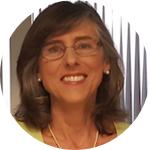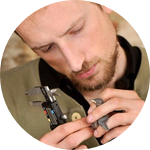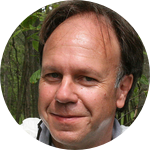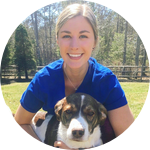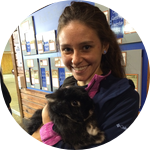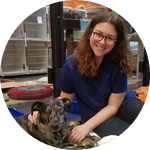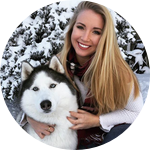About This Project
The Chernobyl disaster site has hundreds of feral dogs that are in need of care. A team of students from the University of South Carolina will work with an international team of veterinarians and animal welfare groups (CFF+) to gather scientific information concerning the health of these dogs in relation to radiation exposure. The team will spend three weeks in June, 2018, at the Chernobyl animal clinic in Ukraine gathering DNA and other measures of animal health.
Ask the Scientists
Join The DiscussionWhat is the context of this research?
In 1986 the Chernobyl Nuclear Power Plant exploded and spread vast amounts of radioactivity into the environment. It is considered the largest industrial accident in history. Over 120,000 people from 189 villages were evacuated. Pets were abandoned. Currently, dog populations explode to 1000 or more during the summer months but crash precipitously during the winter because of lack of care and food. An annual spay/neuter/vaccination clinic has been established to help with animal control and to reduce suffering of these animals. These animal control efforts offer a unique opportunity to study the health consequences of exposure to radiation that will be of great scientific interest with potential applications for public health.
What is the significance of this project?
This project will study the health effects of radiation on these animals while simultaneously helping to provide essential animal welfare to stabilize population sizes and reduce long-term suffering. We are working with an international NGO (Clean Futures Fund, CFF+) to provide basic medical services for all dogs in the Zone. The proposed long-term research program will provide much needed scientific evidence as to the effects of radionuclides on animal health and longevity. The opportunity to study these dogs is unique and will generate novel insights that would not be possible for humans or most other animal species. Such knowledge is important for the dogs and other animal life in the zone, but also for the 3500 people who work in Chernobyl every day.
What are the goals of the project?
The next campaign to work with these dogs will be June 1-24, 2018. About 500 dogs will be humanely captured, given a medical exam, spayed or neutered, vaccinated, and measured for radioactivity. Our data collection will focus on determining the effects of radiation exposure in dogs in the Zone. This includes examining eyes for cataracts (an early sign of significant radiation exposure), and collecting DNA samples. Each dog will be outfitted with a special radiation dosimeter to assess radiation exposure during the following year. Following the clinic, DNA samples will be brought to the laboratory where students will assess damage to DNA resulting from radiation exposure.
Budget
Funding is needed to cover transportation and living costs for five students and their professor to travel to Ukraine for three to four weeks. In addition, funds are needed to purchase radiation dosimeters and chemicals needed for assessment of genetic damage. Genetic damage will be assessed by the “comet” assay using a robotic microscope provided by the University of South Carolina for this study.
This initial request is for the costs of field work this June, 2018, with a goal of $12,500. Our "stretch" goal is $25,000 as the University of South Carolina will match Experiment.com up to this amount.
Donations beyond our proposed goals will be used to support trips to Ukraine to perform follow-up exams on dogs and to expand the range of genetic assays of the DNA samples (e.g. DNA sequencing and metagenomics analyses of the microbiome).
Endorsed by
 Project Timeline
Project Timeline
June 1, 2018: Mousseau and students arrive in Ukraine. Training and preparations will continue for 3 days.
June 4, 2018: Spay-neuter-vaccination clinic begins at the Nuclear Power plant site.
June 11, 2018: Spay-neuter-vaccination clinic begins in Chernobyl Town.
June 18, 2018: Spay-neuter-vaccination clinic begins in Slavutych, a control area.
June 24, 2018: Research team returns home to SC to begin laboratory follow-up.
Sept-Dec 2018: Laboratory research at USC continues.
May 20, 2018
Project Launched
Jun 01, 2018
Arrive in Ukraine to begin field work
Jun 24, 2018
Finish field work in Ukraine and return to the USA to begin laboratory follow up studies of genetic damage.
Dec 31, 2018
Laboratory studies will continue through the academic year to assess genetic damage related to radiation exposure.
Meet the Team
Affiliates
Affiliates
Affiliates
Affiliates
Team Bio
This year, five highly motivated undergraduates will participate in the field work in Ukraine. One student, Gabby, will use this experience as the basis of a masters degree while at least one other student will generate an honors thesis from this research. Also on the team are: Natalia, Jordan, Courtney and Kayla!
Tim Mousseau
Professor Tim Mousseau, PhD, has been studying the impacts of radiation from nuclear accidents since 2000. He has led >35 research expeditions to Chernobyl and >20 to Fukushima. He and his collaborators have published more than 100 scientific papers related to radiation effects on wildlife and he is considered a leading authority concerning the ecological consequences of radiation in the environment.
Dr. Mousseau is an elected fellow of the American Association for the Advancement of Science (AAAS), the Explorers Club, and the American Council of Learned Societies (ACLS) and has published > 200 scientific papers and 11 books or monographs in the fields of ecology, evolution, genetics and radioecology.
Gabby Spatola
In addition to participating with the field work in Ukraine, Gabby will be conducting laboratory studies for genetic damage to dog DNA. After completing her graduate program she plans to attend veterinary school.
Courtney Rulison
Courtney plans to attend veterinary school after completing her undergraduate studies at USC.
Natalia Hank
Natalia is pursuing a career in veterinary medicine after finishing her undergraduate education in Biological Sciences at USC.
Jordan Chertok
Jordan is an undergraduate pre-veterinary student pursuing a Biological Sciences degree at USC with minors in chemistry and psychology.
Kayla Russell
Kayla is a senior at the University of South Carolina, graduating with a B.S. Biology degree. She is pursuing a career in veterinary medicine and will be applying to veterinary schools in the near future.
Project Backers
- 53Backers
- 100%Funded
- $12,500Total Donations
- $130.31Average Donation
